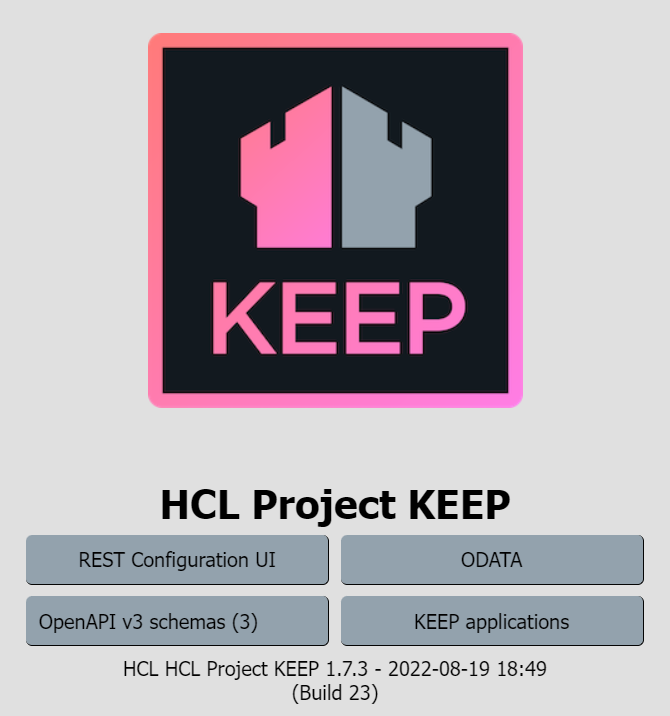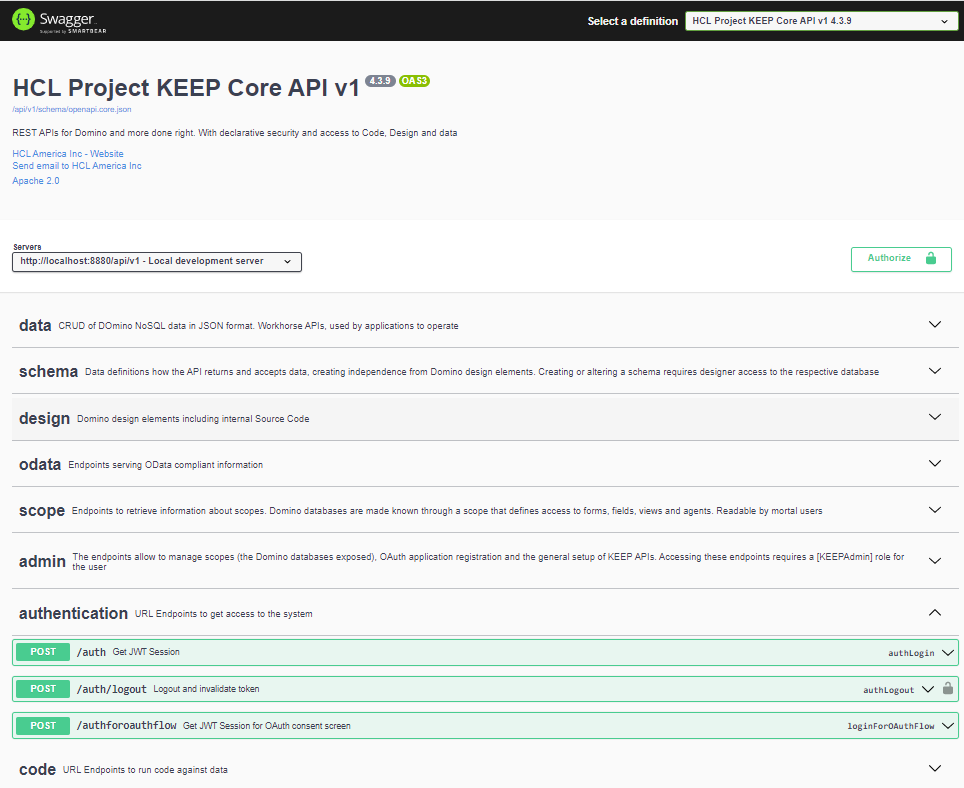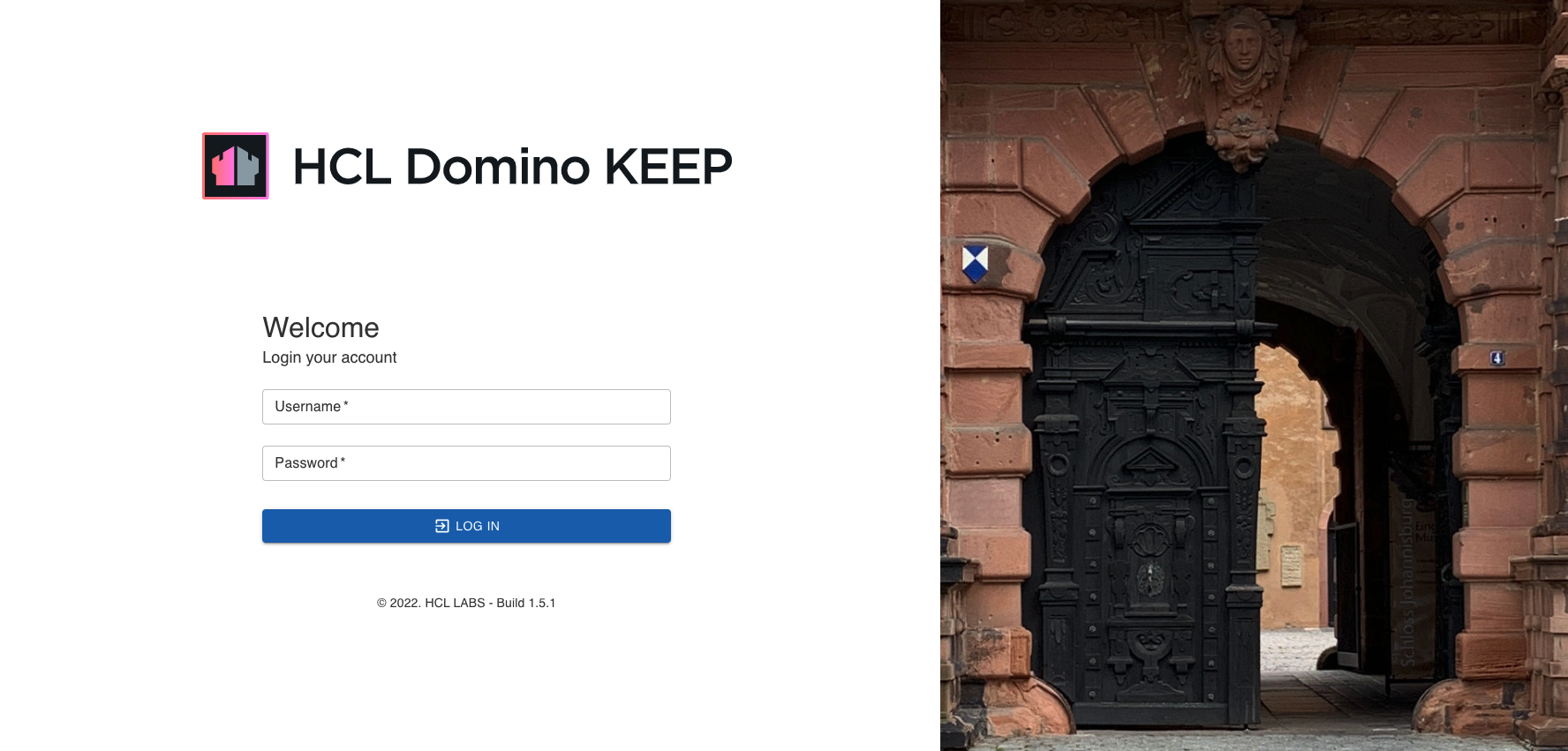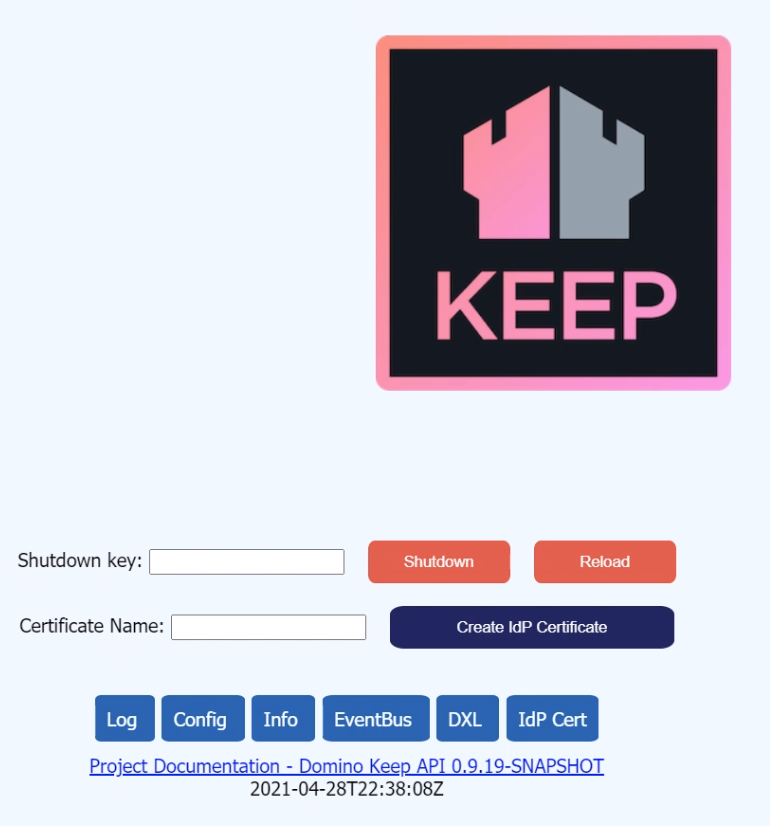Quickstart
What’s New
Check the Changelog to learn what is new in 1.7.x Beta EA
The KEEP schema
You won’t find the KEEP schema here. Samples and explanations, configuration and steps - yes. The actual schema however lives live on your KEEP server instance as OpenAPI specification. You can read and explore it directly with your own data!
A few phrases you should know
- A database exposed on the API is referred to as a scope. The exposure happens through an entry in KEEP’s configuration database by an administrator with
Editoraccess there. The scope gets used in the URLs as?dataSource=[scopename]. Scopes for databases are lowercase only - The shape of data available is referred to as a schema. The schema is an json file in the design resources of the database. It gets created by a developer with
Designeraccess to the NSF - A KEEP Application is an OAuth compatible definition of a
client_idand aclient_secretas well as the list of permitted scopes - A scope points to a schema that is contained in a database. A database can have multiple schemas for different use cases and a schema can be pointed to by more than one scope
Pick the name of your scope wisely. It is the external name you share with others and thus hard to change without breaking external apps
Let’s get started
To get up and running quickly, you will need to:
- Install KEEP on a Notes client or a Domino server.
- Pick a database you want to work with (you could use demo.nsf).
- Use the KEEP API to create a schema REST access (if you dare, use Domino designer :-) )
- Pick the forms and fields to expose.
- Pick the views you want to be REST accessible.
- Pick the agents. (Optional)
- Use the KEEP API to create a scope,
- Try out the API.
You can use the built-in Swagger API, Postman and Curl, or the KEEP Admin UI. To help you, use one of the following tutorials. We have a curl based keep shell script for you to play with.
Make sure to complete the post installation steps to ensure proper operation
Tutorials
- Easy steps on this site
- A tutorial for the skilled Notes developer
- Similar to the previous one, but from the viewpoint of a skilled web developer
- Explore on your own using a Postman collection

The Postman collection has sample interactions with the local sample Demo.nsf, go check it out
Roles
- Domino developer: creates the schema that defines what data can be accessed in a nsf database
- Domino administrator: creates and activates the scope that defines how the data can be accessed. Also creates (optional) OAuth compatible applications with
client_idandclient_secretproperties - VoltMX administrator: configures Volt MX’s foundry middleware to interact with KEEP using the foundry KEEP adapter
- Application developer: develops applications leveraging KEEP Endpoints, VoltMX services and front-end tools like VoltMX Iris, VSCode or any tools and framework of choice
Read more about them in KEEP Roles
Endpoints
Ensure your endpoints are secure. Bring up a browser and verify that you can hit these endpoints:
| Endpoints | Ports | Details | Webpages |
|---|---|---|---|
| KEEP API Home Page | 8880 | Start page |  |
| Live KEEP API | 8880 | Interact live with the API |  |
| Admin UI | 8880 | Login with an admin user. LocalDomainAdmin member |  |
| Management API | 8889 | Access to the log and runtime info |  |
| Prometheus Metrics | 8890 | Performance info in Prometheus format. Protected with basic authentication (metrics/metrics) | |
| Health check endpoint | 8887 | Server healthcheck endpoint as used by Kubernetes or Openshift | |
| Auth | 8880 | The endpoint, [POST] http/s://${HOST}:8880/api/v1/auth, is the default end point to exchange Domino web credentials for a JWT access token. For example, use the token in Postman request headers as a Bearer authentication header. You also can use your own IdP to gain access tokens |
What’s next?
Based on your interest, start by exploring the following sections of this documentation:
- Dive deeper into installation and configuration
- Learn more about using KEEP.
- Explore the internal working of KEEP and know more about The Barbican.
- Familiarize yourself with extending KEEP.